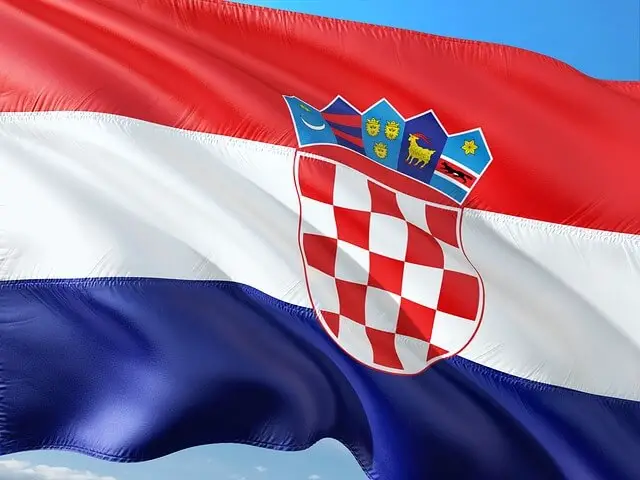Two years ago, the world watched with anxiety as a novel virus threatened to take the lives of millions and completely disrupt human livelihood. Now, after months of riding an epidemiological rollercoaster, citizens are refocusing their attention once more, this time to cheer on national heroes as they compete to do their country proud.
Croatia is no exception. Europe’s holiday paradise has sent eleven athletes (seven men and four women) to vie for gold against the world’s elite of winter sport. On February 4th, Croatia’s modest but inspired team waved the Trobojnica alongside the colours of ninety other nations in a traditional show of solidarity and sportsmanship. With patriotic sentiments high, I want to draw our attention to arguably the most potent symbol of Croatian cultural identity, the flag.
The modern flag of Croatia was adopted on December 21st, 1990, only a day before the constitution. However, this design was not the first. Throughout Croatia’s history, many different standards have flown over Zagreb. Still, they contained many standard features which we can still observe today.
Starting with the base palate, the flag consists of a traditional tricolour (Note: Trobojnica means Tricolor), a popular scheme employed by many countries across Europe. The triband consists of three horizontal red, white, and blue stripes. While these colours may seem somewhat generic on the surface, they are part of the Pan-Slavic design laid out in the 1848 Prague Slavic Congress. Moreover, this specific combination has additional symbolic value to Croatia, representing the historical constituents of the Kingdom of Croatia. Croatia proper is represented by the red and white, Slavonia by the blue and white, and Dalmatia again by blue. Yellow is also featured historically in Dalmatia, but I imagine it was omitted to maintain a simple design. Nonetheless, this seamless arrangement portrays the interwoven identities of the Croat nation.
The coat of arms of “grb” is the most prominent symbol of Croatia that is featured as the focal point of the flag. The central shield is a checkerboard known colloquially as “šahovnica.” The checkerboard goes way back, first used in 1495 with everyday use since the 10th century. So, every time a fan dawns a team Croatia jersey, remember that they are wearing nearly a thousand years of tacky but iconic history.
Perhaps the most misunderstood portion of the Croatian flags comes from a five-shield crown that adorns the beloved checkerboard. Each shield represents the five historical regions of Croatia. Going from left to right, we start with the six-point stary over the crescent moon, an ancient symbol of Croatia proper. Next, there are the blue and red stripes of the Dubrovnik region, conveniently neighbouring the three leopard heads of Dalmatia. Istria is expressed by a golden goat on a dark blue shield. Finally, the last shield represents Slavonia with another six-point star over the marten or “kuna” that shares its name with Croatia’s national currency. Over the šahovnica, these shields symbolize the identity of all of Croatia’s peoples, each region a jewel in the crown of Croat unity.
Croatia’s flag, much like its people, embodies an ancient culture with diverse origins that have concentrated within modern borders. Whether you identify personally as Croatian or simply observing at a sporting event, take the time to appreciate the majestic beauty of a national symbol that was almost a thousand years in the making.
To read more about sport in Croatia, follow TCN’s dedicated page.









